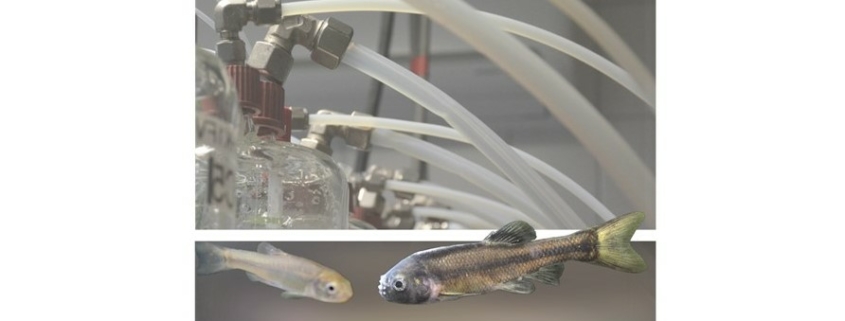Fish short-term reproduction assay (OECD 229)
The fish short-term reproduction test is an in vivo screening assay that provides information about possible endocrine-mediated effects on adult fish. Within the OECD Conceptual framework for the testing and assessment of endocrine disrupting chemicals, it is a level 3 assay. We perform this test according to OECD test guideline 229 (Fish short-term reproduction assay, revised in 2012) in compliance with Good Laboratory Practice (GLP). Our standard test species is the fathead minnow (Pimephales promelas), which is bred inhouse.
We also perform a further level 3 assay, the ‘21-day fish assay: a short-term screening for oestrogenic and androgenic activity, and aromatase inhibition’ according to OECD test guideline 230.
Adult fish are exposed to a series of concentrations of the test substance, and to control water. For difficult-to-test substances, OECD guidance document 23 is taken into account. If required, a solvent control is included. Generally, exposure is carried out under flow-through conditions. The actual concentrations of the test substance in the flow-through system are verified by our inhouse analytical facility, if required directly after sampling.
The main endpoints of the fish short-term reproduction test are reproduction (fecundity), vitellogenin levels and secondary sexual characteristics. Gonad histopathology and fertilisation rate are additional optional endpoints.
Laboratories conducting this assay must demonstrate their ability by performing a technical proficiency study with reference compounds. ECT has successfully completed such a technical proficiency study with fathead minnows using three reference substances: 17ß-estradiol as reference for estrogenic activity, prochloraz as reference for aromatase inhibition and 17ß-trenbolone as reference for androgenic activity. The results for all three reference compounds were exactly as expected based on the OECD guidance and OECD validation studies (read more).

 K. Duis, M. Weil
K. Duis, M. Weil R. Ketelhut
R. Ketelhut K. Duis
K. Duis